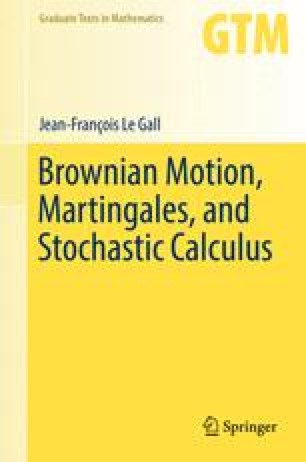

It is also possible to change the temperature by placing the slide into the refrigerator or by warming it up. None has happened to fall below 9, and one is above 11. In 1827, Robert Brown (1773 1858), a Scottish botanist, prepared a slide by adding a drop of water to pollen grains. Observe under the microscope in bright field and in dark field. The result is forty simulated stock prices at the end of 10 days. Brownian motion, also called Brownian movement, any of various physical phenomena in which some quantity is constantly undergoing small, random fluctuations. Brownian motion is the constant, but irregular, zigzag motion of small colloidal particles such as smoke, soot, dust, or pollen that can be seen quite clearly through a microscope. What Is Brownian Motion Because the movements of atoms and molecules in a liquid and gas is random, over time, larger particles will disperse evenly throughout the medium. Place one drop of the dilute milk on the microscope slide and place a cover slip on top of it. Brownian motion is considered a Gaussian process and a Markov process with continuous path occurring over continuous time.

If you use undiluted milk, then the concentration of the fat droplets is to high to see them move freely. Brownian motion therefore already hinted towards the now well established fact, that matter is made of atoms and molecules, which bump into each other.ĭilute one to four drops of milk in about 5ml of water. Much later, in 1905, Albert Einstein published a paper, in which he explained the causes of this motion. It was rstbrought to popular attention in 1827 by the Scottish botanist Robert Brown, who noticed that pollen grainssuspended in water move about at random even when the water appears to be very still. He could not explain the cause of this motion, however. Brownian motion is perhaps the most important stochastic process we will see in this course. In particular, Einstein showed that the irregular motion of the suspended particles could be. Brownian motion can be observed as light shines. It was in this context that Einstein's explanation for brownian motion made an initial impression. He observed, while observing pollen grains under the microscope, that particles trapped in the water move about. Brownian motion is the seemingly random motion of particles, atoms, or molecules that emerges out of the random collisions of those particles. The meaning of BROWNIAN MOTION is a random movement of microscopic particles suspended in liquids or gases resulting from the impact of molecules of the. Brownian motion is named after botanist Robert Brown. In diffusion, particle move from an area of high concentration to low concentration. Brownian motion is also responsible for diffusion effects. Because of the small movement, it is necessary to use a high magnification, such as 400x. Brownian motion is also known as pedesis, which comes from the Greek word for 'leaping.' Even though a particle may be large compared to the size of atoms and molecules in the surrounding medium, it can be moved by the impact. If you want to observe Brownian motion, then you need to have suspended particles in water. Brownian motion is the random movement of particles in a fluid due to their collisions with other atoms or molecules. S2CID 18675919.> USA Shop | Germany Shop | UK Shop | Canada Shop <<<Īs an Amazon Affiliate, I earn a commission but it does not cost you more. This last assumption is removed in jump diffusion models.Ĭonsider a financial market consisting of N + 1, with respect to the Lebesgue measure. The idea of harvesting energy from graphene is controversial because it refutes physicist Richard Feynman's well-known assertion that the thermal motion of atoms, known as Brownian motion. Another assumption is that asset prices have no jumps, that is there are no surprises in the market. that no transaction costs occur either for buying or selling). This model requires an assumption of perfectly divisible assets and a frictionless market (i.e. Under this model, these assets have continuous prices evolving continuously in time and are driven by Brownian motion processes. Brownian motion is the random motion of particles suspended in a fluid (a liquid or a gas) resulting from their collision with the fast-moving atoms or molecules in the gas or liquid. Sharpe, and are concerned with defining the concepts of financial assets and markets, portfolios, gains and wealth in terms of continuous-time stochastic processes. Samuelson, as extensions to the one-period market models of Harold Markowitz and William F.

While he was studying microscopic life, he noticed little. The explanation of the phenomenon of Brownian motion, given by Einstein in 1905 and based on the kinetic-molecular conception of matter, is considered one. The Brownian motion models for financial markets are based on the work of Robert C. The Brownian movement was discovered in 1827 by Robert Brown, a botanist.


 0 kommentar(er)
0 kommentar(er)
